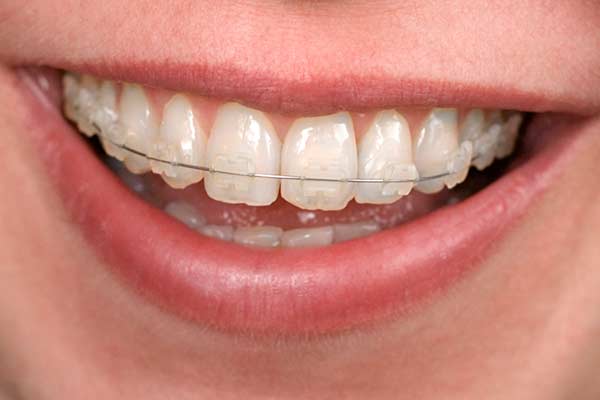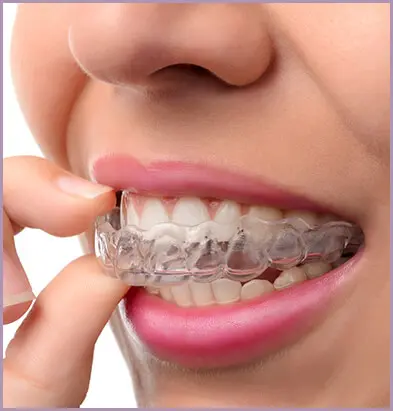Comprehensive Guide to Orthodontics Treatments for Remedying Oral Misalignments
Comprehending the complexities of each treatment, including their systems, advantages, and potential disadvantages, is critical in making informed decisions about one's orthodontic therapy. As we navigate through the detailed overview to orthodontic treatments for remedying oral misalignments, the elaborate details of each approach will unfold, shedding light on the path toward a functional and unified dental positioning.
Orthodontic Procedures Overview

Regular modifications and tracking are critical components of orthodontic treatment to make sure progression is on track and to make any type of required modifications along the method. By going through orthodontic treatments, clients can not just attain a straighter smile but likewise enhance their overall oral health and wellness and function.
Conventional Braces: How They Work
When taking into consideration orthodontic therapies for dental imbalances, traditional braces stand apart as a reliable technique for dealing with teeth positioning. Standard dental braces contain braces, cords, and bands that collaborate to apply continuous stress on the teeth, slowly moving them into the wanted positioning. The brackets are attached to the teeth utilizing an unique adhesive, and the cables are threaded with the braces. By readjusting the stress of the cords, orthodontists can manage the direction and force put on each tooth, assisting them right into proper alignment in time.
As pressure is used to the teeth with the dental braces, the bone bordering the teeth is improved to sustain the brand-new tooth positions. Individuals will require routine changes at the orthodontist's office to make certain the dental braces proceed to apply the proper pressure for efficient teeth motion.
Invisible Aligners: Cons and pros
Unnoticeable aligners provide a convenient and very discreet option to typical braces for dealing with dental imbalances. These clear, custom-made trays are practically invisible when worn, making them an enticing alternative for individuals looking for a much more visually pleasing orthodontic therapy. Among the main advantages of unnoticeable aligners is their removability, enabling much easier upkeep of oral hygiene contrasted to standard dental braces. Clients can remove the aligners prior to eating or cleaning their teeth, reducing the danger of food getting embeded the home appliance and streamlining the cleansing process.

Surgical Orthodontic Options
Surgical interventions in orthodontics existing sensible choices for dealing with complex oral imbalances that may not be efficiently fixed via standard orthodontic treatments. While unseen aligners and traditional dental braces can remedy lots of orthodontic concerns, particular situations need medical intervention to achieve ideal outcomes. Surgical orthodontic options are normally advised for serious malocclusions, significant jaw inconsistencies, and situations where the underlying bone framework needs alteration to achieve correct positioning.
One usual medical orthodontic procedure is orthognathic surgical procedure, which entails rearranging the jaws to correct practical problems such as trouble speaking or eating. This surgery is usually performed in cooperation with an orthodontist that helps straighten the teeth prior to and after the treatment. Surgical orthodontics may also entail treatments to reveal affected teeth, remove excess gum tissue, or improve the jawbone to develop a much more harmonious facial account.
Prior to taking into consideration surgical orthodontic alternatives, people undertake a detailed examination to figure out the my response need and potential advantages of such interventions. cumming aligners. While surgical procedure may seem daunting, it can significantly boost both the feature and aesthetics of the smile in situations where traditional orthodontic treatments fail
Retainers and Post-Treatment Care

Failure to conform with post-treatment treatment instructions can result in regression, where the teeth progressively relocate back towards their initial placements. Regular retainer wear, great oral hygiene, and normal dental exams are crucial for maintaining the results accomplished through orthodontic surgery and making sure the long-lasting security of the corrected oral alignment.
Final Thought
In final thought, orthodontic procedures provide various choices for remedying dental misalignments. why not try here Surgical orthodontic options are offered for a lot more severe imbalances. Generally, orthodontic procedures can efficiently improve oral health and wellness and aesthetic look.
As we browse via the detailed guide to orthodontic treatments for fixing dental misalignments, the intricate details of each method will unfold, shedding light on the course towards a useful and harmonious oral positioning. - cumming orthodontist
One of the most common orthodontic therapies is the use of braces, which consist of metal braces and cables that apply gentle stress to gradually change teeth right into the wanted position.When thinking about orthodontic treatments for oral misalignments, typical braces stand out as a time-tested technique for remedying teeth placing. Additionally, undetectable aligners might not be suitable for complex orthodontic issues that need more substantial teeth activity, as they are commonly suggested for light to modest cases. Retainers are tailor-made orthodontic devices created to hold teeth in their fixed placements after the conclusion of orthodontic treatment.
Comments on “How Cumming Orthodontics Addresses Common Braces and Invisalign Issues”